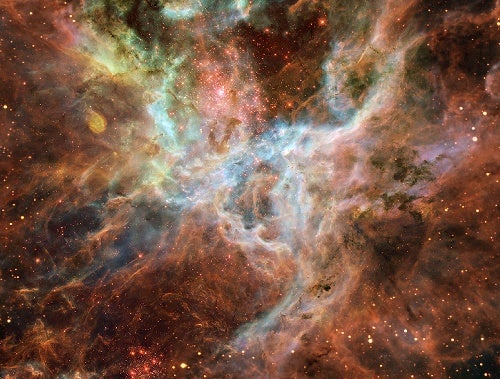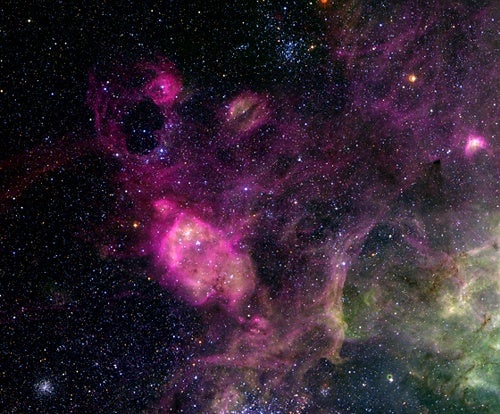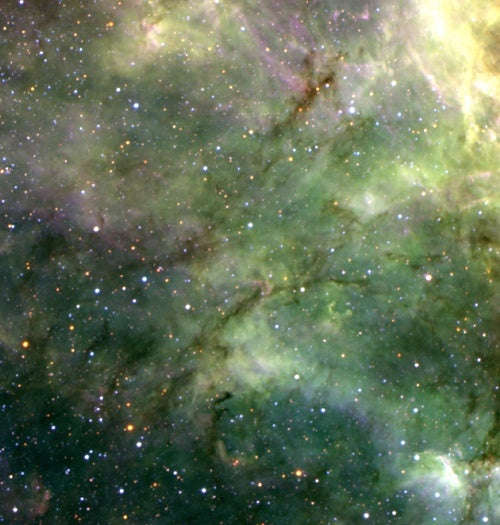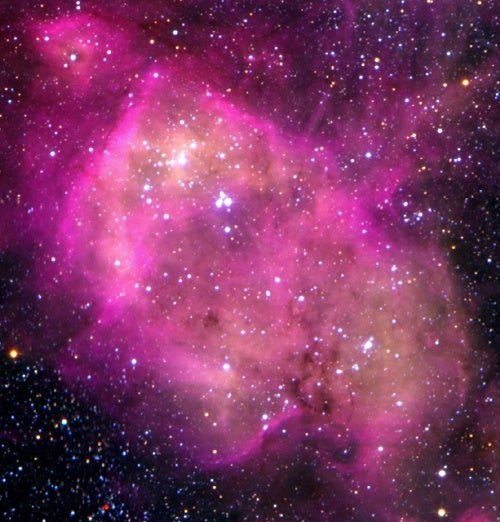Northern Hemisphere skywatchers gush about the beauty of the Orion Nebula, a sight that warms observers’ hearts during cold winter nights. Those who live in the Southern Hemisphere rave with even greater gusto about the intricate splendor of the Eta Carinae Nebula. Yet neither of these stellar nurseries, as spectacular as they are, come close to matching the Tarantula Nebula.
Yet, despite its great range, the Tarantula glows brightly enough to be seen with the naked eye. Observers in the Southern Hemisphere can glimpse it on the outskirts of the LMC, in the southeastern corner of the constellation Doradus. The massive complex spans 1,000 light-years, making it the biggest stellar nursery in the local universe. In fact, if this huge network of stars, gas, and dust replaced the Orion Nebula, it would cover a quarter of the sky and shine so dazzlingly you could see it in daylight.
The beauty of the Tarantula and its surroundings takes center stage in two recently released images. One shows the nebula’s tangled central regions as seen by the Hubble Space Telescope. Over the past 15 years, Hubble has taken more than 1,000 images and spectra of the Tarantula. Amateur astronomer Danny LaCrue recently sifted through this data and found that 15 exposures taken with the telescope’s Wide Field and Planetary Camera 2 could be combined into a dramatic mosaic. LaCrue used the ESA/ESO/NASA Photoshop FITS Liberator, which he downloaded from the Spacetelescope.org web site, to work with the format of Hubble’s images.
The mosaic reveals wispy tendrils of gas and dust interlaced with hot, luminous stars. Just above the image’s center lies R136, a rich cluster of stars that formed from the dense gas cloud. The cluster contains hundreds of stars, some up to 100 times as massive as the Sun and with surface temperatures 10 times the Sun’s. Prodigious amounts of ultraviolet radiation from these stars ionize the surrounding gas, causing it to glow. The brightest patches of nebulosity extending from the cluster somewhat resemble the legs of a spider, hence the nebula’s name.
The entangled filaments on the nebula’s outskirts more closely resemble a spider’s cobweb. This was the target for astronomers using the 2.2-meter telescope of the European Southern Observatory (ESO) in La Silla, Chile. They took an image of the northeastern corner of the Tarantula that extends into the more barren areas just beyond.
The red color in the ESO image results from excited hydrogen atoms, and the green is emission from oxygen atoms that have lost two electrons. The radiation from the hot stars in R136, which lies beyond the lower-right corner of the image, knocks off those electrons. Because the intensity of radiation rises closer to the cluster, the color turns more yellow there.
Several other objects of interest lie in the field. The larger, reddish clouds are also regions of star birth, just on a much smaller scale than those in the Tarantula itself. The smaller, more circular nebulae are supernova remnants — the material blasted out of massive stars when they explode at the end of their lives. Even star clusters can be seen in the field of view. These are the result of a previous wave of star formation that swept through the area tens to hundreds of millions of years ago. They represent what the Tarantula Nebula may look like in the distant future.













